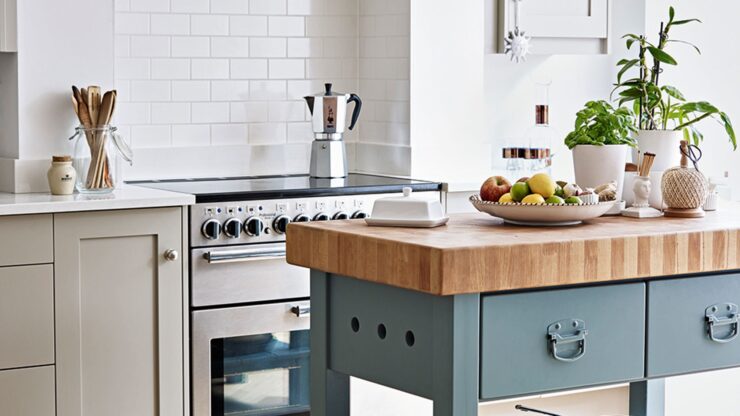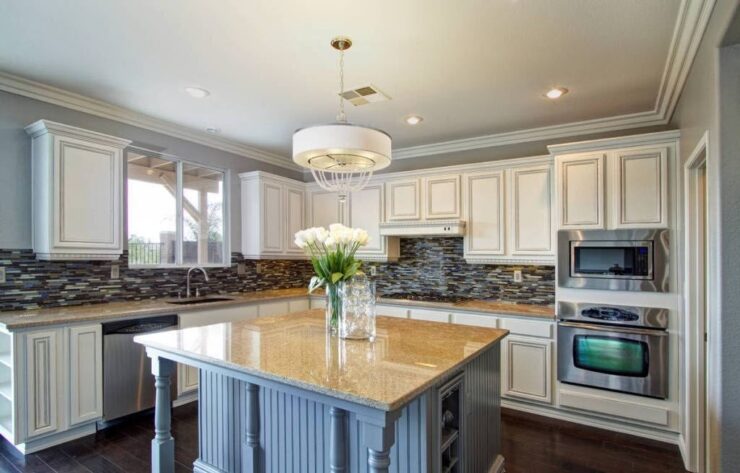Table of Contents
Do you feel like the time has come for you to bring some changes into your kitchen? Kitchen remodeling is usually a significant expense for homeowners, but it will pay off in the years to come while increasing the overall value of your home at the same time. How do you get it done? Think about your family and your lifestyle in order to plan the kitchen accordingly and get the most out of the space.
Do you like to cook a lot? Does your family hang out in the kitchen often? Having trouble storing items? These are just some of the questions you should keep in mind when choosing new features and the overall design of your kitchen. But at times it is enough to give the cabinets a fresh coat of paint, in order for the whole room to get a new vibe.
This does come with a lot of risks. Here are 7 common mistakes you really want to avoid when refinishing your kitchen cabinets.
1. Doing everything by yourself
Although you may be a do-it-yourself type of person by nature, many professionals advise you to consult with experts before starting the work on your cabinets. Maybe even get in touch with cabinet restorers via thecabinetspainter.com who will give you useful tips, discover tricks or suggest some solutions that you haven’t had the chance to consider before. If you do not have any experience whatsoever in this field, you better hire a professional, to avoid destroying the cabinets and having to burden your budget even more with buying new ones.
Still thinking about whether you should hire a contractor? Take a look at this article for more reasons on why you should hire a kitchen contractor.
2. Not planning the overall expenses

Determining the budget for the cabinets is extremely important before the process of refinishing them. Think about which features are most important to you and allocate your finances accordingly. Keep in mind that kitchen cabinets usually take up about a third of a typical remodeling budget.
3. Wrong worktop height
If you decide to change your worktops as well, here’s what to pay attention to. Placing worktops at the wrong height can compromise the overall functionality of the kitchen design. So, is there a rule of thumb for determining the correct height for a countertop? On average, kitchen worktops are between 890 and 940 mm high. This provides the most comfortable height for performing common kitchen tasks. However, there is no perfect height for worktops as this is usually determined by the thickness of the worktop and the height of the person. These two items may vary depending on the supplier or your personal preference.
4. Not considering the possibility of increase of the storage spaces

Who doesn’t need additional storage space in the cabinets? There are many new solutions for storing kitchen items and they can really help to increase the space, which you can utilize and implement when you start refinishing. Solutions like pantries and super cabinets help you make the most of it. Think outside the box of typical kitchen cabinets to make use of unused areas. Adjust the kitchen floor plan to find additional storage options and keep your countertops from looking cluttered.
5. Limitation to traditional cabinet use
When deciding to do some redecorating work in your kitchen, think of creative ways to turn cabinets into functional and unique furniture. A free-standing cabinet, for example, can be used to store items that you don’t often use in one place, and its appearance can seamlessly fit into the overall design of the kitchen or can serve as its accent.
6. Failing to properly finish the painting
While color is key when it comes to kitchen cabinets, it’s more about the finish, because if you get it wrong, the color won’t last – no matter how great the shade, splashes, and spills will quickly ruin it. The cabinet’s paint must be more permanent. Kitchens are arguably the hardest working rooms in our homes, so you need paint that’s designed to withstand it all.
7. Forgetting the overall look of the kitchen

When planning your refinishing, remember to consider every element, including the color of the walls, the style of the tiles, and the floor, to create a cohesive whole. You may even consult some interior designer to give you advice on which colors will complement the whole room.
Finally, play with colors. Using different shades of the same color you can create a very sophisticated kitchen. Think about what you would put on the walls. Small details will make it look more comfortable and playful. After all, it’s the room where a lot of action takes place, then why not make it inspiring and comfortable to spend time in?
More and more often, we witness that “DIY” projects can transform the entire home. In the case of the kitchen, most often these projects relate to minor repairs, creative ways to save and organize space, and minor cosmetic changes. However, independent production or restoration of old furniture is no longer a rarity.

Carpenters and other craftsmen are generally engaged if a more complex production of a certain piece of furniture or a complete production of kitchen elements is required. On the other hand, there are many simple ways to refresh the look of the kitchen. If the elements are still of high quality, stable and functional, but you are tired of their appearance, it is enough just to sand the existing color of the cabinet fronts and paint them in another, more desirable variant.
In addition, if you change the handles, the old kitchen can shine in a completely new light with a little effort. Blackboard paint in the kitchen? Great idea! Paint a part of the wall or the front of the element with this color and thus create an auxiliary place for quickly and easily compiling a shopping list or recording a recipe, as well as exchanging humorous and romantic messages. Don’t forget to add some interesting decorations, and even introduce some plants, which is quite a modern trick designers tend to use lately.

